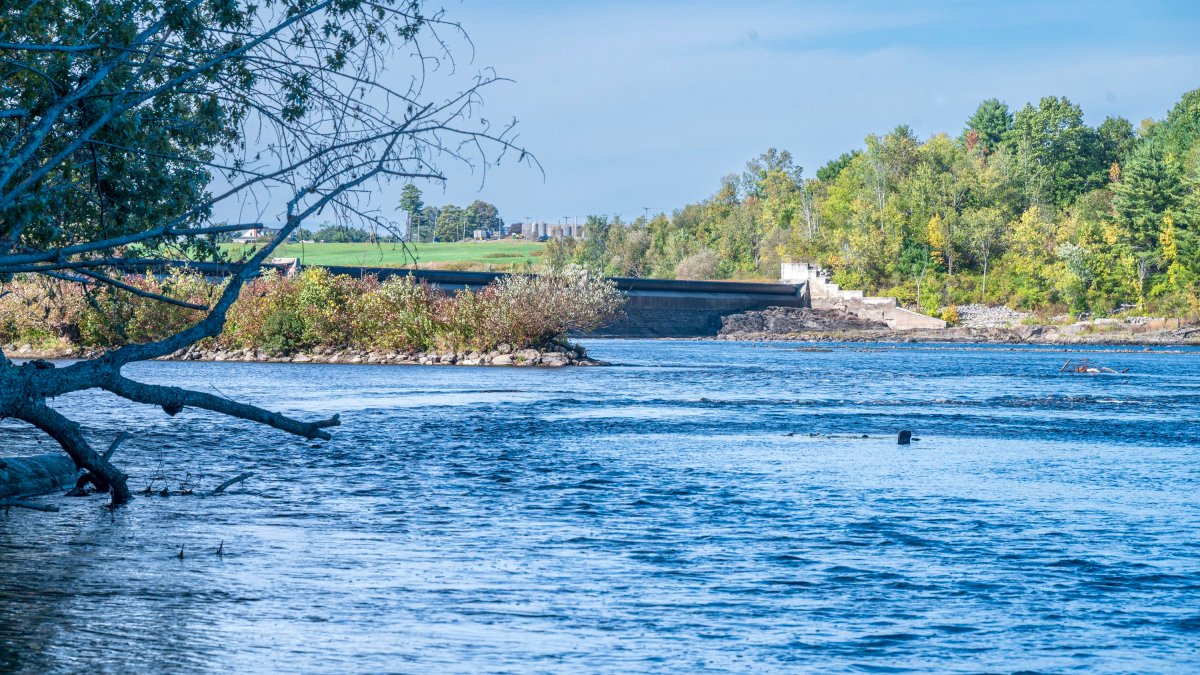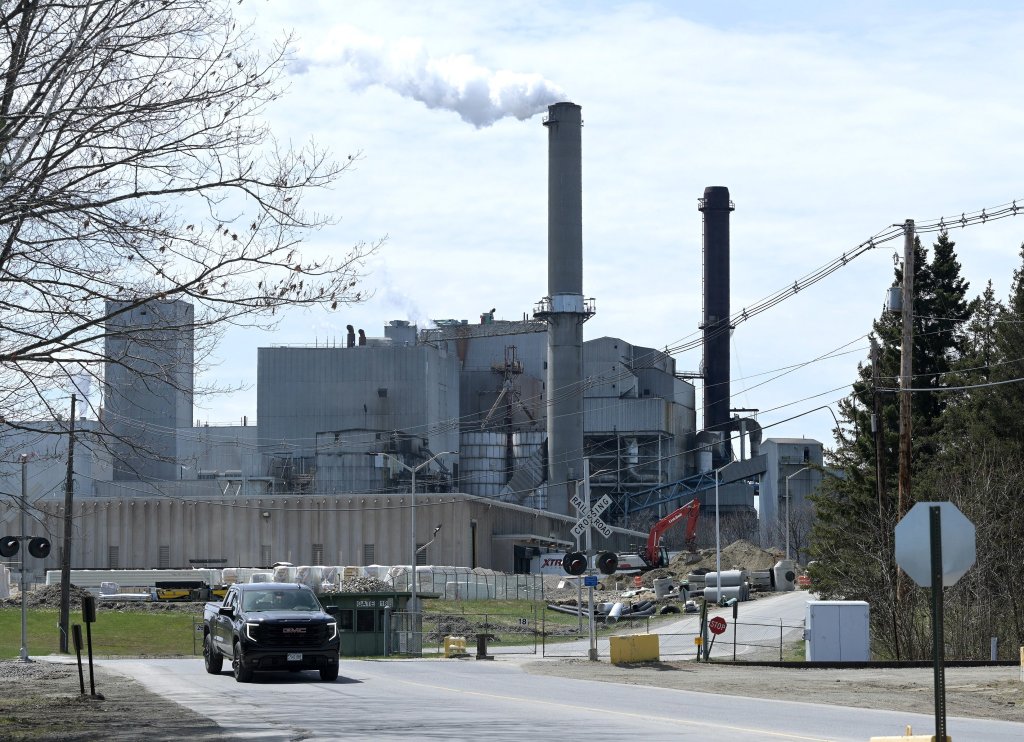
The Nature Conservancy announced Tuesday that it plans to buy four dams on the Kennebec River from Brookfield Renewable Energy and decommission them to reopen the waterway for sea-run fish.
The deal, signed earlier this month for well over $100 million, could transform the ecology of one of the state’s largest watersheds. Environmental groups have said the four dams, in Waterville, Winslow, Fairfield and Skowhegan, have decimated sea-run fish populations and that removing them is the best way to restore those populations.
Critics have already jumped on the sale’s economic impacts — most notably the potential consequences for the Sappi Somerset Mill in Skowhegan, where leaders suggested the removal of the Fairfield dam would doom the mill and its 750 unionized workers.
With many questions left unanswered, here’s what we know so far.
Visible changes aren’t coming for a while
While the Nature Conservancy and Brookfield Renewable Energy agreed to a sale earlier this month, it’s not expected to be finalized for 10 to 12 months.
The Nature Conservancy still needs to raise about $30 million to fund the purchase price, transaction fees and the establishment of a new nonprofit, the Kennebec River Restoration Trust, to administer the decommissioning and removal of the four dams. The process for doing so hasn’t yet been laid out.
The environmental giant said it expects to fundraise an additional $140 million to pay for the “operations and removal” phase of the project. That work will take place over the next seven to 10 years, the Nature Conservancy said.
As long as it still owns the dams, Brookfield will continue to pay property taxes to municipalities along the river, and Sappi’s Somerset Mill will not see any impacts in the immediate future.
Skowhegan Main Street also said the dams’ removal would have no impact on the ongoing River Park project and its artificial whitewater features.
The Nature Conservancy wants to restore the river to a ‘free-flowing’ state
The lower Kennebec River hasn’t been dam-free since the 1800s, when millions of Atlantic salmon and other sea-run fish found their preferred breeding grounds in the cold tributaries of the river.
After the installation of dams up and down the 170-mile-long river, several species of migrating fish became endangered. Atlantic salmon populations upriver have neared zero.
The Nature Conservancy is buying the four dams to decommission and remove them, with the aim of restoring those sea-running fish populations.
Environmental groups had long opposed Brookfield’s efforts to renew and amend licenses for the four dams. They said the fish passage requirements imposed by federal regulators didn’t go far enough, and that there was no evidence such strategies had ever actually restored fish populations in New England’s rivers.
The groups said a free-flowing river — as in, the removal of the four dams — was the only way to accomplish a true renewal of the sea-run fish.
And that’s what The Nature Conservancy hopes to accomplish.
The Somerset Mill appears to be the crux of the issue.
Sappi’s Somerset Mill in Skowhegan, which employs about 750 people and supports the employment of thousands more in the forestry products industry, relies on the impoundment created by the Shawmut dam in Fairfield for its intake and wastewater discharge systems.

If the dam were to be removed, Sappi leaders have said those systems would fail — putting thousands of jobs at risk. Sappi North America said in a statement Tuesday that company officials were concerned about the future of the mill and urged caution.
The Nature Conservancy said it was “100% committed to developing a solution with Sappi that fully addresses the Somerset Mill’s long-term water system needs,” and that any dam removal scenario would protect the mill’s future.
The details of such a scenario were not immediately clear, and Sappi officials indicated that no such agreement had yet been reached.
Political leaders have jumped to support Sappi and the mill workers — and oppose each other
After the Maine Department of Environmental Quality rejected a water quality permit for the Fairfield dam in 2021, putting the future of the mill at risk, environmental groups celebrated. Political leaders, including Gov. Janet Mills, who was then in the throes of a reelection campaign, jumped in to support Sappi, writing an open letter to workers that promised the mill would not close under her watch.
Mills’ office said in a statement Tuesday that her position had not changed: A spokesperson said she would “ensure that the Somerset Mill remains open and thriving and continues to be a source of good-paying jobs in rural Maine as well as an important contributor to Maine’s critical forest products economy.”
Republicans attacked Mills anyway.
State Sen. Brad Farrin, a Republican who represents Skowhegan, blamed the Mills administration for “refusing to issue the dam’s water quality certificate for years” and called her promise to keep the Somerset Mill open “hollow.”
Bobby Charles, a front-runner for the 2026 Republican nomination for governor, said in a statement Wednesday that Mills “has risked family paychecks, and Maine’s energy security in one reckless act.”
Charles demanded Mills “immediately suspend” the sale, conduct an environmental and economic study on the impact of the purchase and guarantee the jobs of Somerset Mill workers via “binding legal commitments.” Mills does not have authority as governor to suspend a private property sale.
Many questions remain unanswered
A day after The Nature Conservancy’s announcement, much remains unclear about the sale and its wide-reaching impacts.
Brookfield was in the midst of the relicensing of the Shawmut dam in Fairfield and amending the licenses of the three other dams. A Brookfield representative did not immediately respond to a question about whether the company plans to continue to pursue those licenses, which would allow the dams to continue operating.
The Nature Conservancy has yet to close the sale, let alone develop a concrete plan for the decommissioning and dismantling of the four dams. Details on the Kennebec River Restoration Trust, the soon-to-be-established nonprofit tasked with overseeing the removal process, haven’t yet been finalized, either.
It’s also unclear exactly what, if any, impact the dams’ eventual removal will have on energy capacity and cost for Mainers. Together, the four dams produced about 47 megawatts of hydroelectric power, or about 6% of Maine’s hydroelectric generation. Other electricity-generating dams above the confluence of the Sandy and Kennebec rivers will continue operating.

We invite you to add your comments. We encourage a thoughtful exchange of ideas and information on this website. By joining the conversation, you are agreeing to our commenting policy and terms of use. More information is found on our FAQs. You can modify your screen name here.
Comments are managed by our staff during regular business hours Monday through Friday as well as limited hours on Saturday and Sunday. Comments held for moderation outside of those hours may take longer to approve.
Join the Conversation
Please sign into your CentralMaine.com account to participate in conversations below. If you do not have an account, you can register or subscribe. Questions? Please see our FAQs.